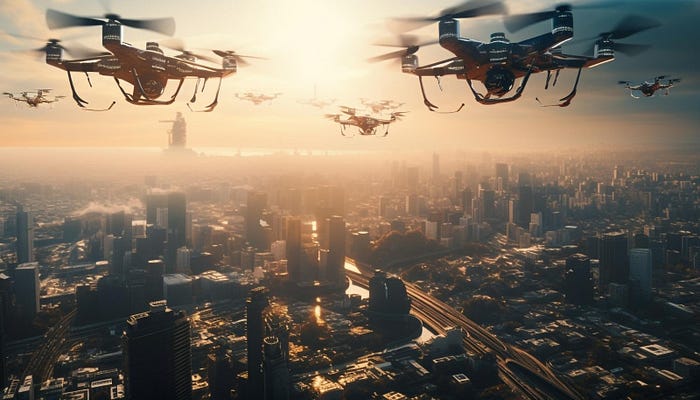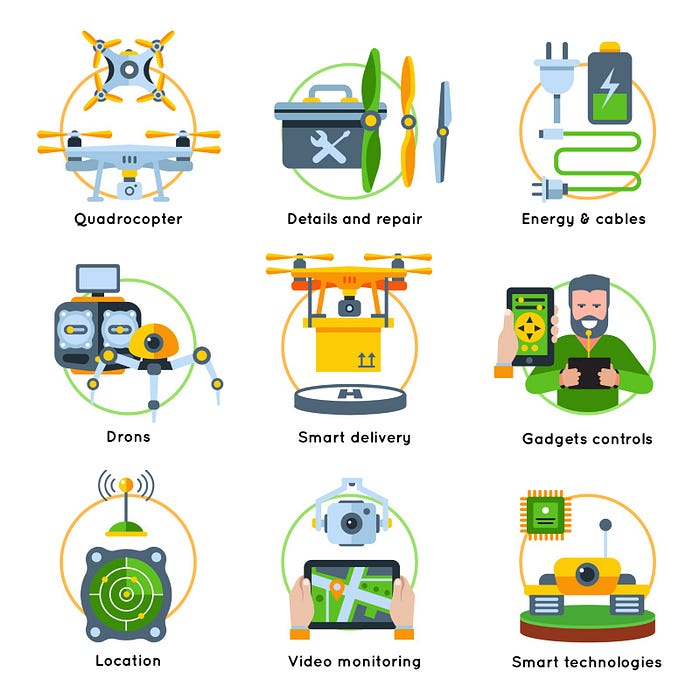Drones in Emergency Response: Training for Critical Situations
Every second counts when it comes to emergency response. The ability to swiftly and efficiently assess, manage, and respond to critical situations can make the difference between life and death. In recent years, the integration of drones into emergency response protocols has revolutionized the way first responders operate in various scenarios. This article explores the crucial role of drones in emergency response and the importance of specialized training for first responders to harness the full potential of this technology.

The Rise of Drones in Emergency Response
Drones, also known as Unmanned Aerial Vehicles (UAVs), have proven to be invaluable tools in emergency situations. From natural disasters to search and rescue missions, drones offer a unique perspective that was once difficult or impossible to achieve. Equipped with high-resolution cameras, thermal imaging, and other advanced sensors, drones provide real-time data that aids in assessing the extent of damage, locating survivors, and identifying potential hazards.
Enhanced Situational Awareness
One of the primary advantages of using drones in emergency response is the ability to enhance situational awareness. In the aftermath of a disaster or during a critical incident, first responders often face challenges in accessing affected areas. Drones can quickly and safely navigate these environments, capturing aerial footage that provides a comprehensive overview of the situation. This information is invaluable for decision-making, resource allocation, and coordinating rescue efforts.
Specialized Training for First Responders
While drones have become increasingly popular in emergency response, their effective deployment requires specialized training for first responders. Operating a drone in high-stress situations, such as disaster-stricken areas or hazardous environments, demands a unique skill set. Training programs focus on equipping responders with the knowledge and skills needed to operate drones safely and effectively.
Technical Proficiency
First responders undergo training to develop technical proficiency in operating drones and interpreting the data they collect. This includes mastering the controls, understanding the capabilities of different sensors, and troubleshooting common issues. Technical proficiency is crucial for maximizing the potential of drone technology and ensuring its seamless integration into emergency response protocols.
Navigating Regulatory Frameworks
As the use of drones in emergency response becomes more prevalent, understanding and navigating regulatory frameworks is a key component of training. First responders must be familiar with local aviation regulations, airspace restrictions, and the legal aspects of drone operations. Compliance with these regulations is essential to ensure the safe and lawful use of drones during emergency situations.
Integration with Incident Command Systems
Effective communication and coordination are paramount in emergency response. Training programs emphasize the integration of drones with existing incident command systems. This includes establishing communication protocols, collaborating with other responding agencies, and incorporating drone data into the overall decision-making process. Seamless integration ensures that drones become force multipliers rather than standalone assets.
Simulated Emergency Scenarios
Hands-on experience is invaluable in preparing first responders for real-world emergencies. Training programs often incorporate simulated emergency scenarios where responders can apply their drone operation skills in realistic settings. These simulations help build confidence, improve response times, and identify areas for continuous improvement.
The Future of Drone Technology in Emergency Response
 As technology continues to evolve, so does the potential of drones in emergency response. Artificial intelligence, machine learning, and advanced sensors hold the promise of further enhancing the capabilities of drones in assessing and responding to critical situations. Ongoing training and professional development will be essential to keep first responders abreast of these technological advancements and ensure their effective utilization.
As technology continues to evolve, so does the potential of drones in emergency response. Artificial intelligence, machine learning, and advanced sensors hold the promise of further enhancing the capabilities of drones in assessing and responding to critical situations. Ongoing training and professional development will be essential to keep first responders abreast of these technological advancements and ensure their effective utilization.Drones have emerged as indispensable tools in the arsenal of first responders, significantly improving their ability to assess and respond to emergency situations. However, the successful integration of drones into emergency response protocols hinges on the training of first responders. Specialized training programs that focus on technical proficiency, regulatory compliance, and real-world simulations are essential for maximizing the potential of drone technology in critical situations. As technology continues to advance, ongoing training will be crucial to empower first responders with the skills needed to leverage the full capabilities of this transformative too.
We would be happy to connect and solve your queries on this topic, drop us an email at connect@prakharsoftwares.com.


Comments
Post a Comment